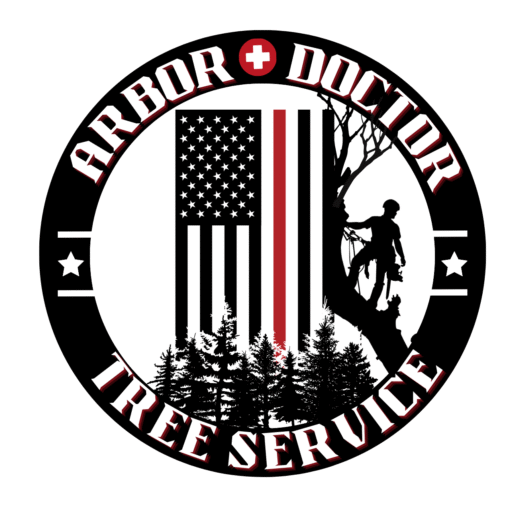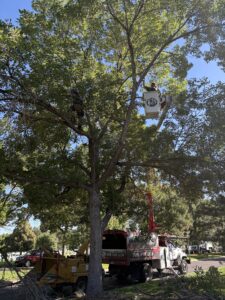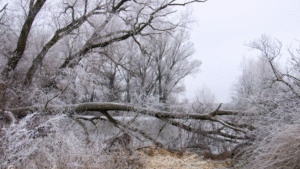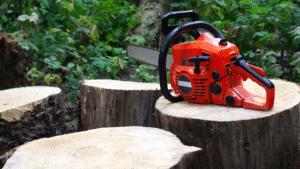Pruning for Protection: Why Fall is the Perfect Time for Tree Trimming
October’s crisp air and stunning colors are a beautiful reminder that winter is just around the corner. While we all love the changing leaves, the arrival of fall also brings a serious concern: hazardous tree branches.
Before the first heavy snow or ice storm of the season hits, now is the critical time to assess and proactively treat your trees. This is where professional tree trimming and fall pruning for protection come in.
The Problem: Winter Weight and Weak Limbs
Winter storms can turn an otherwise healthy-looking tree into a liability. A few inches of wet snow or a layer of freezing rain can add hundreds of pounds to a branch.
When this weight settles on limbs that are already structurally weak, dead, or diseased, the result is often a catastrophic failure. These falling branches don’t just create a mess; they can damage your roof, crush your fence, or block emergency access.
The Solution: Strategic Fall Pruning
As Certified Arborists, we use the fall season for targeted, protective pruning. This process is not about changing the shape of the tree, but about risk reduction and ensuring your tree enters dormancy in the safest possible condition.
Here are the three types of branches we prioritize during our pre-winter storm tree trimming service:
1. Dead or Dying Limbs
A dead limb is a dry, brittle branch that is guaranteed to break under sufficient winter stress.
The Arborist Advantage: We can spot the subtle signs of a dead limb, even those high up in the canopy, and remove them safely before they become projectiles in a wind or ice storm.
2. Diseased Branches
Fungal infections or insect infestations can significantly weaken a branch’s structural integrity. Leaving them on the tree allows the issue to spread while simultaneously creating a higher risk of failure.
The Arborist Advantage: Fall pruning allows the tree to begin the healing process before it fully enters dormancy, helping to isolate and remove the disease before the spring growing season.
3. Overextended or Poorly Formed Limbs
These are branches with structural defects, such as:
Cracks or Splits: Visible compromises in the wood.
V-Shaped Crotches (Co-dominant Stems): These narrow attachment points are inherently weaker than a U-shaped joint and are notorious for splitting apart under stress.
Limbs Overhanging Structures: Any branch hanging over your house, garage, or driveway should be professionally inspected and mitigated for risk.
Why You Should Book Your Service in the Fall
Timing is key for effective tree trimming:
Clear Visibility: With many deciduous leaves dropping in October, it is easier for our arborists to see the full structure of the tree, allowing for a more accurate assessment of weak points.
Scheduling: Demand for emergency tree work skyrockets after the first major storm. By scheduling proactive pruning now, you ensure your tree is ready and you avoid the stress of an emergency call.
Dormancy Prep: While we avoid heavy structural pruning in the fall, removing dead and hazardous material is a gentle way to prep the tree for dormancy and ensure its energy is conserved for a healthy spring bloom.
Don’t wait for the sound of a snapping branch to prompt a call! Taking action now is the most responsible way to protect your property and ensure your trees survive the winter strong and healthy.
Ready to Protect Your Property?
Ensure your trees are storm-ready this winter. Our certified arborists are experts in identifying and safely removing hazardous limbs through proactive fall tree trimming.
📞 Call or Text Arbor Doctor Tree Service today at (720) 298-7279 or request a FREE ESTIMATE!




